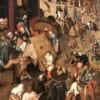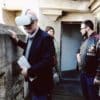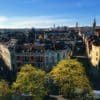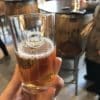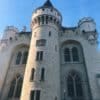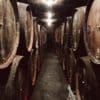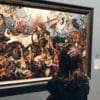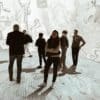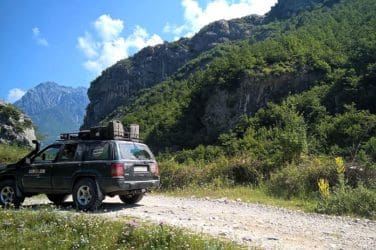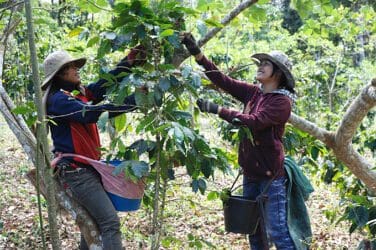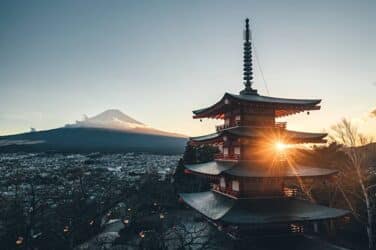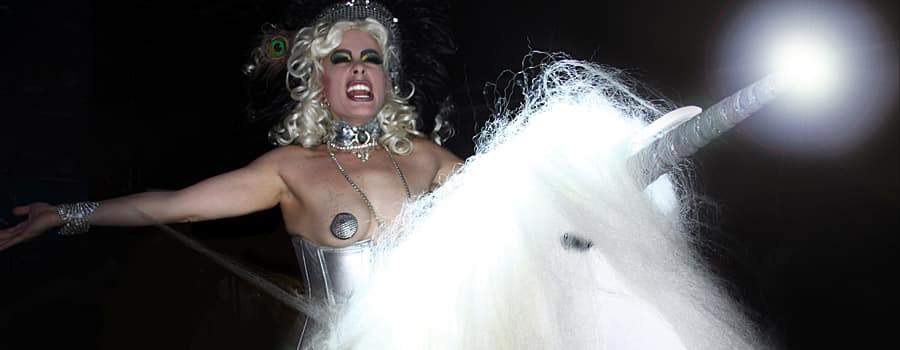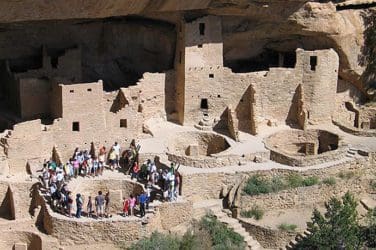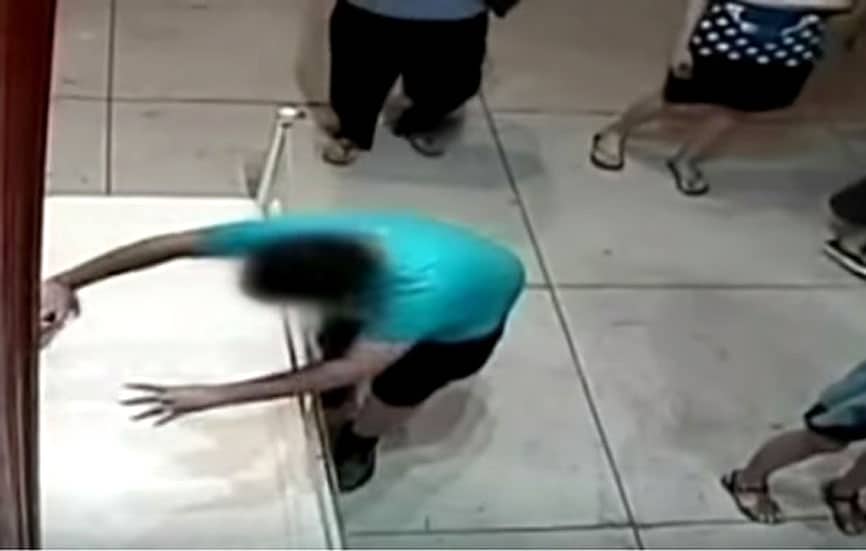Words: Lauren Katalinich
‘There were 119 public executions on that spot,’ our guide says, pointing somewhere to my left.
I strain to catch a glimpse of the gory landmark but all I can see is a pristinely manicured public park.On a bench, a couple are quietly reading; a blanket of half-opened tulips patiently awaits the coming of spring.
This is Brussels. The centre of European democracy. The sun is shining in all the right places, and the city’s practical cosmopolitanism is summed up when two women in suits step off the pavement to let us pass with a kind of busy courtesy.
But our tour is taking us through a very different city. The one that inspired the dark, satirical, sometimes nightmarish work of one of Belgium’s most beloved painters.
It’s the 1550s and Pieter Bruegel’s world is collapsing around him. Fanatic Protestants, inspired by their German neighbours, are burning every cathedral and library in the country to the ground. A brutal and bloodthirsty commander sent from Spain to maintain control of the Low Countries is imprisoning thousands of rebellious peasants. Four beloved mayors have been publicly beheaded. To top it off, we’re in the middle of the mini-Ice Age and communities are suffering through long and bitter winters.
There’s nothing like a little taste of medieval brutality to put our modern anxieties in perspective. A series of exhibits commemorating the 450th anniversary of the death of Pieter Bruegel the Elder offer it in abundance. As well as exploring the enduring relevance of the Flemish Renaissance Master’s oeuvre, these exhibits also bring the frightening times in which he painted to life.
Before I arrived I didn’t care much for Bruegel. His scenes are dark and heavily detailed, sprinkled with allegorical vignettes like a page from a twisted Where’s Wally book. As we file through a series of rooms in the Royal Museum of Fine Arts, a tumultuous scene of violent, twisted bodies and deformed creatures both real and imagined draw a small crowd to The Fall of the Rebel Angels.
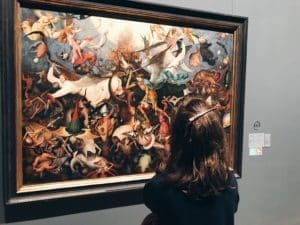
I turn from the painting to watch their expressions. Absorbed, captivated, enthralled: I have to admit, Bruegel’s work is more than just unsettling. In many ways, his paintings feel like puzzles – full of hidden meanings for which we have lost the keys.
But armed with state-of-the-art technology, exhibits featuring ultra-high definition imagery and guided narrations are doing their best to bring visitors up to speed on Bruegel’s long-lost in-jokes.
In one painting, a woman drapes a blue cloak over a man’s shoulders. We learn that it’s an allusion to an old Flemish proverb. She’s cheating on him! Birds represent souls in his paintings and I notice their presence near churches and cemeteries.
Bruegel was one of those few artists lucky enough to enjoy fame and success during his lifetime, in part because his work was both provocative and topical. The Massacre of the Innocents transposes King Herod’s reign of terror onto a quaint Flemish scene in which his baby-gathering soldiers are curiously dressed in the uniforms of the Spanish army.
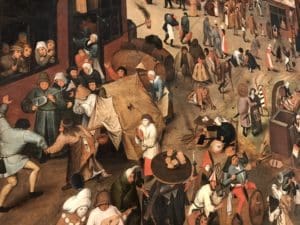
Each painting, its colours still brilliant on oak canvas, overflows with emotion that speaks clearly through the centuries – a horror at the state of the world, amusement at the enduring stupidity and folly of man, and an adoration for the simple pleasures of nature, music, and village life. I’m struck by the power of this great artist to speak so clearly over the centuries and while not able to decipher the message, it feels like one of momentous importance.
“We don’t care if people remember the names of the paintings, we want them to leave with an emotion.” So says one of the creative minds behind Beyond Bruegel, an immersive art exhibit in the towering Dynasty Palace at the foot of the Mont des Arts in the heart of Brussels’ city centre.
We are standing in a completely white room. A voiceover narration begins to tell us the story of Bruegel, the lost details of his birth and early life, and the trajectory of his passionate beliefs, while 360-degree projections of his characterful paintings dance across the walls and spread beneath our feet.
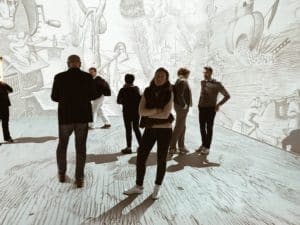
It’s the closest I’ve ever felt to being inside a painting and it’s a little unnerving. Bruegel’s work can be disturbing in its most unobtrusive form but to walk among his creations, exposed to the darkness of his mind in life-size reality, lends a nightmarish quality to the exhibit. But I’ve learned by now that truth in the face of discomfort is exactly Bruegel’s message.
Not all the views are this bleak, though.
“This isn’t an exhibition about art history,” a curator at the Porte de Hal says, handing me a chunky headset. “It’s about history. We want you to see what Bruegel saw.” My thighs are burning by the time we reach the ramparts atop the medieval spiral staircase but the sweeping panoramic view of the capitol is stunning. Built in 1380, this final remnant of Brussel’s city wall is a perfect Rapunzel’s tower worlds above the busy streets below.
I pull the goggles over my eyes and the car-filled roundabouts are gone, replaced by a robust city wall with the now-buried Zenne river meandering alongside it. I can feel the sun, the real sun, on my face as my eyes follow a little band of peasants hauling their cart across the bridge below. The illusion is bewitching and only occasionally punctured by the disorienting sounds of an ambulance amid the grazing sheep and windmills in the distance.
As we leave the city, it becomes clear that more survives of Bruegel’s world than the headset suggests. We head towards the Boon Brewery, to encounter the beer world’s most eccentric offspring: lambic.
People have been brewing lambic and ‘sour beer’ in this area for hundreds of years. The fruit-based lambics are something of an acquired taste but a renewed interest in sour beers in the U.S. and Europe has encouraged new breweries and blenders to revive traditional production methods.
Karel, our guide, greets us outside. He is the youngest son in the Boon family and recently decided to follow his brother and father into the family business. They live in the cottage next to the brewery.
“My father bought this place in 1975. He got a great deal because the previous owner didn’t want to rip him off. He thought it would fail right away.”
With pretty good reason. In the 1980s, production in the area had shrunk to just three breweries from the dozens at the turn of the century. The funky, fruit-based lambics are something of an acquired taste but a renewed interest in sour beers in the U.S. and Europe has encouraged new breweries and blenders to revive traditional production methods.
Unlike your stouts and IPAs, lambic beer is brewed using a process called ‘spontaneous fermentation’ where brews are exposed to wild yeasts that exist naturally in the air rather than ones cultivated in a lab. To hear it explained sounds more like sorcery than science.
Karel leads us up narrow stairs to a shallow tank of murky brown brew where the spring air rushes in from the open windows and ripples across the surface. The setup stands in contradiction to every rule of hygienic brewing my limited knowledge affords- uncontrolled, future flavours determined by nature’s whim. But people have been brewing lambic by this method for 500 years and it’s the rich diversity of microflora native to this region southwest of Belgium that gives its beers such a curious variety of flavours and smells.
“You can do this process elsewhere,” Karel tells us, “But it wouldn’t be lambic.”
Although it’s only eleven in the morning, the brewers are eager for we’re eager to sample their blends. My first sip of a cherry sour kriek feels a bit like close-up look at a Bruegel painting. It’s a sensory shock, puckeringly sour, but with an acidity sure to brighten any food its paired with. Their most traditional creation, the oude geuze, is a mix of one and three-year-old lambic. It tastes surprisingly like a cava and its fine, energetic bubbles leave the jaw delightfully tense.
On the train to Belgium, I had fallen unprompted into one of those melancholic moods so many of us suffer from when we think about the sorry state of the world these days. How will we ever navigate the desperate obstacles of rising inequality, corruption, displacement, animal extinction?
Three days later, the conversation is veering swiftly down the same path as the hours wear on at our final dinner in the country. But tonight, I’m thinking of Bruegel. The visionary painter who felt so keenly the impending destruction of his own world. With the setting sun of his land flooding across long wooden tables, and the sprightly taste of Flanders lambic on my tongue, I feel the reassurance that comes with touching history. The comforting reminder that while the problems of this earth are monumental, humanity has been here before.
To celebrate Bruegel’s work on the 450th anniversary of his death, throughout spring and summer 2019 a series of exhibitions will be held in Brussels and beyond. Go to VisitFlanders for more details.


